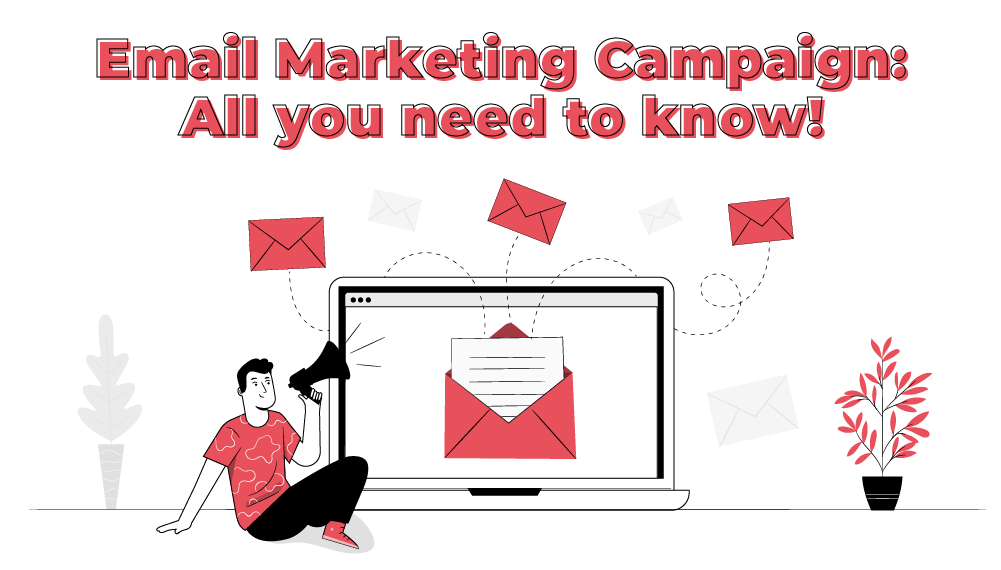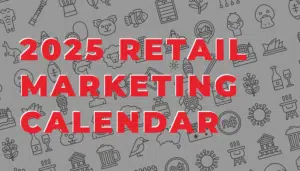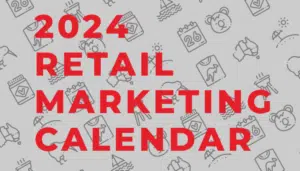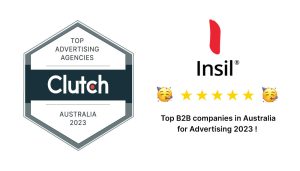No conversation about Digital Marketing is complete without mentioning ‘Email Marketing’. With technological advancements over the past 10 years, many skeptics believe that email marketing is no longer relevant. Technologies like Artificial Intelligence, automation chatbots and social media analytics likely cause this misconception. However, the numbers speak for themselves. According to research, nearly 60% of Marketers claim that email is their biggest source of ROI. Email is also 40% more effective at acquiring new customers than Facebook or Twitter. There are only a few metrics that support the effectiveness of email marketing. So where do you begin? Here’s all you need to know about starting your own Email Marketing campaign!
What is Email Marketing?
Email marketing is a digital marketing strategy that involves sending emails to prospects and customers. The central goal of email marketing is to convert prospects into buyers, and first time buyers into recurring, loyal customers. A successful email marketing campaign will enable recipients to engage and take action with your business. Ultimately, it can help you attain more sales and leads.
Why is Email Marketing important?
Aside from the stats we mentioned above, there are many reasons why Email Marketing is still relevant:
- Email remains as the #1 channel of communication: The average office worker checks their email about 30 times in an hour. 95% of people also consider email newsletter content from a recognised brand to be useful.
- You can control your list: Unlike other Marketing channels like social media, emailing lists remain yours to keep and use. There’s little to no risk of losing any contacts or followers.
- Customisation options: With numerous exciting templates and designs to choose from, you can pretty much create any email style to suit your goals. Reshuffling call to actions and engagement tools can help as well.

- Better automations and conversions: There are plenty of automation softwares out there that can ease up the email marketing campaign. Right from starting the email, to setting up triggers and conditions, the entire process is easy to use and understand. Emails also convert much better than other forms of Marketing communications, boasting an ROI of 4400%!
So now that we have your attention with how effective email marketing can be, let’s discuss the steps you need to get started!
Step 1: Build a targeted list
Before you begin sending out exciting emails, you’ll need to build an effectively targeted emailing list. There’s nothing more frustrating for a prospect when they’re bombarded with promotional emails to which they never consented to. A list of sales qualified leads that are interested in your product or service will increase your chances of success. However, this is easier said than done.
On average, 80% of website visitors will leave your site for good without signing up for a newsletter. That’s because of the low attention span prospects have these days. A good way to deal with this is to prompt a popup that appears when prospects are on your website. Here, you can use enticing incentives to lure prospects into signing up to your newsletter and thus, your email list. These incentives are also sometimes known as ‘lead magnets’. Some examples are:
- Free ebook or guide
- Cheat sheet of tips
- Webinar recordings
- Free trials or quotes
- Discounts and vouchers
- New product lists and stock updates
Whatever you choose, make sure it’s easy to use, provides significant improvement/benefit and is instantly available. Something like a click-to-download or click-to-view. This shouldn’t cost you much, so take advantage of it.
Having an ‘exit-intent popup’ can add extra leverage to your website’s ability to add a conversion. These are pop up windows that detect prospect behaviour when they are about to leave your site. If your incentive is clear and attractive, you’ll end up receiving the email details.
Step 2: Define your goals and narrow your audience
Not all email marketing campaigns were created alike, so you need to know what your goals are. Depending on what your goal is, you will then be able to design your email’s elements such as text, imagery and incentives. Some goals include:
- Increasing engagement with your website
- Welcoming new signups and subscribers
- Re-engaging with old and existing subscribers
Once you’ve set your desired goal for your campaign, you can move on to segmenting your audience.

Target audience segmentation is a crucial part of email marketing. Sending emails without segmentation is the marketing equivalent to shooting blindfolded, expecting to hit the target. Therefore, using demographics such as age, gender, profession and location can help you gather info about your audience and narrowing your search. While most of this information can be gathered after your email campaign is launched, there are other ways to find it. Google Analytics is a powerful tool that allows you to view your website traffic by demographics, so you can track who’s visiting your website the most. Similarly, a Facebook Tracking Pixel can help you track visitor traffic from Facebook. For more information, check out our articles on how to install a Google Analytics Tag or a Facebook Tracking Pixel on your website.
With that done, you can move on to the fun bit: designing the emails! Keep in mind that marketing emails are significantly different to traditional peer-to-peer emails. Each element of a marketing email must be reviewed and checked to ensure a smooth lead conversion process. Note the following tips to write an incredible email:
Step 3: Plan the email template
- Name & subject: Avoid using the term ‘no-reply’ as your sender ID, since prospects will automatically understand it’s a marketing email. As a result, it’ll probably end up in the spam or trash folder. Instead, use your company’s name so the prospect knows the email is from the website they signed up on. For the subject, use a catchy, interesting title that specifically addresses a need the prospect has. Using their name is a great way to ensure a more ‘personalised’ feeling for the customer. Secondly, try describing what the email is about to give your customer a preview of what they can expect. This reduces any uncertainty or doubt that may stem from a sudden email.
- Main text: Ensure that the bulk of your email is not text and words, because your prospect is likely to delete it if so. It’s an email, not an essay, so use your words wisely. With the text, as long as it is conversational, interactive and empathetic while addressing the customer’s needs, you’ll be fine. Practice storytelling in your approach and customers will enjoy reading. The important aspect to note is the inclusion of a clear call-to-action (CTA) in your text. Make sure to clearly include a button or a link to redirect prospects to your website, a video or a file that leads them to the next step of the conversion process.
- Media (photos & videos): Here’s where you have some flexibility with your designing. Imagery, videos and GIFS are a great way to keep emails fun and engaging for customers. These can either be directly related to your business, a client project or testimonial, data chart or metrics, and so on. Images and media give customers a momentary break from reading, increasing the likelihood of conversion.

With all these points in check, you’re ready to test your email and send it through to your contacts!
Step 4: Review and follow up
In case you’re thinking it’s all said and done, think again. Most companies fail to gain precious leads because they don’t follow up or track their metrics after sending emails. It’s important to measure your progress to see the effectiveness of your campaign. After that, you can make any necessary changes to improve your results. Some key metrics are:
- Email click-through rates: The ratio of how many people receive your email and how many click/open it
- Spam reports: How many emails were reported by customers to be ‘spam’
- Unsubscribe rates: How many customers unsubscribed to your mailing list.
Regardless of how good or bad your metrics might be, don’t forget to follow up and send emails to customers to keep them within the loop. Retargeting to customers is a great way to remind them of your business. Information about product/service discounts, promos, offers and sales can bring customers back if they lose your emails.
To wrap up…
Email marketing is a powerful method of communicating and engaging with customers. Tried and tested for years across industries, it’s popular for a reason. Keep these steps in mind when you’re planning out your own email marketing campaign. You can also make sure you don’t make these 5 crucial email marketing mistakes that we’ve outlined in this article. From then on, may the force be with you.
What is an Email Marketing Campaign?
Email marketing is a digital marketing strategy that involves sending emails to prospects and customers. The central goal of email marketing is to convert prospects into buyers, and first time buyers into recurring, loyal customers. Email marketing allows for a wide range of customisation options with text and media. Engaging with prospects through emails and follow ups make email marketing a powerful tool for businesses.
When we talk about an email marketing campaign, it’s when businesses align their email strategies to meet their central goals and objectives. With good ROI and easy implementation, it’s been a popular choice for years.
How effective is an Email Marketing campaign?
When compared with other forms of digital advertising such as social media advertising and text messaging, email marketing yields a higher ROI. With low cost automation templates and endless design options, you can customise your emails to suit your goals. Email marketing also involves easy to follow analytical metrics to track progress.
S
Since people have more email accounts that social media accounts, rest assured your emailing efforts will not go to waste!
How to start an Email Marketing Campaign?
To get started on an effective email marketing campaign, keep the following steps in mind:
- Build a targeted list: There’s nothing worse than sending emails to those who never signed up for it. Build a targeted list of people by incentivising them to sign up to your newsletter. Secondly, use exit-intent prompts and catchy phrases, discounts and promos to convince them.
- Define your goals: Narrowing down your goals to make them as specific as possible will smoothen out the process. Deciding whether you want to raise awareness, improve lead conversion or retarget to existing customers will help plan your strategies. Use detailed segmentation based on audience demographics to help specify your audience.
- Plan the email template: Use attractive imagery and short and sweet text in your emails. Don’t forget to add a clear and catchy call-to-action (CTA) that leads prospects to a website, video or document file. From there on, you can lead them down the funnel as procedure goes.
- Review and follow up: Review your progress by assessing metrics about your campaign’s success such as subscriber rates, click-through-rates and spam reports. From there on, you can plan your expenditure to improve your ROI numbers.
Insil is a boutique Australian Marketing Agency, providing customers with a holistic approach to Design Thinking and Marketing Services. Are you interested in generating more sales, increasing traffic and attracting higher quality leads? Sign-up to receive a free, no-obligation strategy session TODAY.




